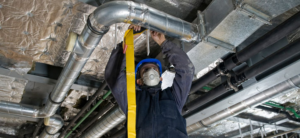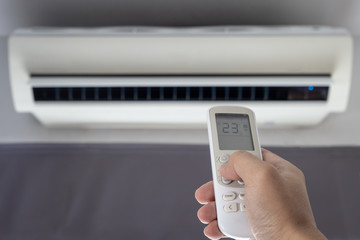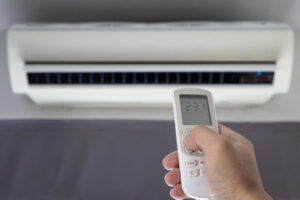Installing an HVAC unit can be disruptive, but HVAC Lexington makes the process go smoothly. Homeowners should lay down drop cloths to protect flooring and move household items near work areas to a safe place.
Poor airflow can lead to heating and cooling problems, so homeowners should consider installing new insulation.

Many factors can affect the cost of a new HVAC system. Some of these include the type of system you choose, installation method, and other upgrades or add-ons. You can save money by getting multiple estimates and asking lots of questions. However, it’s important to remember that you don’t want to just look for the lowest price. You want to find a contractor who will do the best work for the right price.
The size of your home and the energy efficiency of your existing system can also play a role in the cost of HVAC replacement. A larger home will need a more powerful system to keep the air cool and heated. Also, if your home isn’t properly insulated or air sealed, it may need to be re-sealed and insulated in order to run efficiently.
You should also consider whether you need to install ductwork as part of your HVAC replacement project. If you do, the total project costs will be higher than if you don’t. This is because ductwork is expensive to install, and it can be challenging to fit it in certain homes.
Other factors that can impact the cost of your HVAC replacement project are installation labor rates, the brand and model of your new unit, and any special requirements you have for your HVAC system. For example, if you have pets or children who suffer from allergies, you may need to upgrade your filtration systems in order to provide healthier indoor air.
Another thing to keep in mind is that some contractors will charge more for their services than others. This is because some HVAC companies spend a large portion of their budget on marketing and salesperson salaries. This can increase your cost by as much as 30%.
There are also several financing options available for homeowners looking to replace their aging or broken-down HVAC system. One option is a home equity loan, which allows homeowners to borrow against the value of their home. This type of loan typically has low but variable interest rates and is tax-deductible. However, you should be aware that there are fees associated with this type of loan, so be sure to ask about them before you sign a contract.
The energy efficiency of HVAC systems is a major factor in the overall cost of heating and cooling. Ideally, an efficient system will reduce both the utility bill and carbon footprint. It will also increase a home’s value and resale price. The best way to achieve a high level of energy efficiency is through the use of energy-efficient equipment and properly maintaining the system.
The first step in maximizing your HVAC system’s energy efficiency is to choose the right size unit. An oversized unit will waste energy and overheat, while an undersized one will struggle to maintain temperature. A professional will perform a load calculation to determine the exact size needed for your space.
Another way to improve energy efficiency is to install a programmable thermostat. It will allow you to set your desired temperature and the HVAC system will run at a lower speed until it reaches that temperature. In addition, you should ensure that furniture and curtains are not blocking air vents or ductwork.
When purchasing a new HVAC system, look for the highest Energy Star rating possible. This will indicate how much more efficient it is than other models of the same size. The higher the rating, the more money you will save on your utility bills. It’s important to remember that a higher SEER rating doesn’t necessarily mean a more expensive model. The difference in ratings is based on how the system operates, seasonal differences, and other factors.
It is also worth noting that the energy consumption of a HVAC system is largely determined by its installation method and usage. The equipment itself may be rated highly, but if it’s poorly installed or used improperly, then the system will not work efficiently. Moreover, HVAC systems need to be inspected regularly by a qualified technician in order to optimize their performance and energy efficiency.
A well-maintained and conditioned HVAC system can reduce the total energy costs of a building by up to 50%. These savings can be significant and help companies manage their financial and environmental risks. In addition to reducing the operating costs of an HVAC system, regular maintenance can also extend its lifespan and improve its performance.
The HVAC installation process involves several steps, from determining the right size unit to installing ductwork. A licensed professional should be able to answer all your questions and provide a detailed quote before the work begins. They will also inspect the unit after completion and provide a warranty.
During the initial consultation, an HVAC technician will measure your space and determine the best location for the outdoor unit. They will then create an opening, install insulation, and connect refrigerant lines to the indoor unit. Finally, they will test the system and perform a comprehensive inspection.
When hiring a professional, ask about their experience and education. They should be licensed, certified, and have a good reputation for quality workmanship. Also, ask about their billing methods and whether they offer a warranty on their services.
If you’re replacing an old system, a technician will evaluate your space and layout to determine the correct size unit for your home or office. An oversized unit can cause short cycling, which reduces efficiency and leads to energy waste. On the other hand, an undersized unit can struggle to maintain temperature.
Your HVAC technician will also check the evaporator coil, which is usually located above the furnace. If it’s difficult to get to, additional costs may be incurred. In addition, your installer will need to disconnect the service power supply from the existing electrical panel, and mount a new disconnect box.
Before the actual work begins, your contractor will lay drop cloths to protect flooring and other household items from dust and debris. They’ll also move furniture and other large household items to a safe location away from the work area. If you have pets or young children, keep them away from the work area as well.
Ductwork is often installed after electrical components, as this prevents conflicts between the two systems. It’s important to choose a qualified technician who has extensive experience with ductwork and will take care of your property during the installation process.
During the installation, your HVAC technician will place a metering device on the evaporator coil to check its charge level. This will help them ensure the coil is charged correctly, which maximizes energy efficiency and avoids premature failure of the system. They’ll also use a duct blower to verify that the airflow is properly distributed.
Purchasing an HVAC system is a big investment, and you want to be sure that it will last as long as possible. That’s where a warranty comes in. There are two types of warranties available for new systems: a manufacturer’s parts warranty and a contractor’s labor warranty. Each type of warranty has different terms and conditions, so it’s important to understand what each one covers.
Parts warranties typically only cover repairs or replacement of faulty components. The warranty period may vary from manufacturer to manufacturer, but a common warranty is 10 years. A home warranty is a separate service contract that provides coverage beyond the manufacturer’s parts warranty. It is also worth noting that most manufacturers require proof of maintenance to keep a parts warranty valid, and failing to maintain your equipment could invalidate the warranty.
Many manufacturers also limit their parts warranty coverage to a single repair visit, so you may want to consider purchasing an extended warranty to keep your system covered after the initial repairs are completed. Keeping a paper trail of all maintenance visits is crucial to maintaining your warranty, so save all documentation from each service and tune-up.
Some homeowners will conduct do-it-yourself repairs in an effort to save money or to improve their understanding of how their HVAC system works. However, this can be dangerous for several reasons. First, the manufacturer’s warranty is usually voided if you attempt to perform advanced tasks such as replacing or removing parts. Second, some of these DIY jobs can lead to faulty or damaged parts.
The best way to avoid these problems is to work with an HVAC company that offers a labor warranty and is willing to stand by their work. These companies often receive training from the manufacturers of their products and are knowledgeable about all the latest advances in HVAC technology.
You should also make sure that you register your warranty with the manufacturer when it’s installed. This can help speed up the process of getting repairs or replacements. Generally, a registration form will ask for information such as the serial number of the unit and the address of your home.


